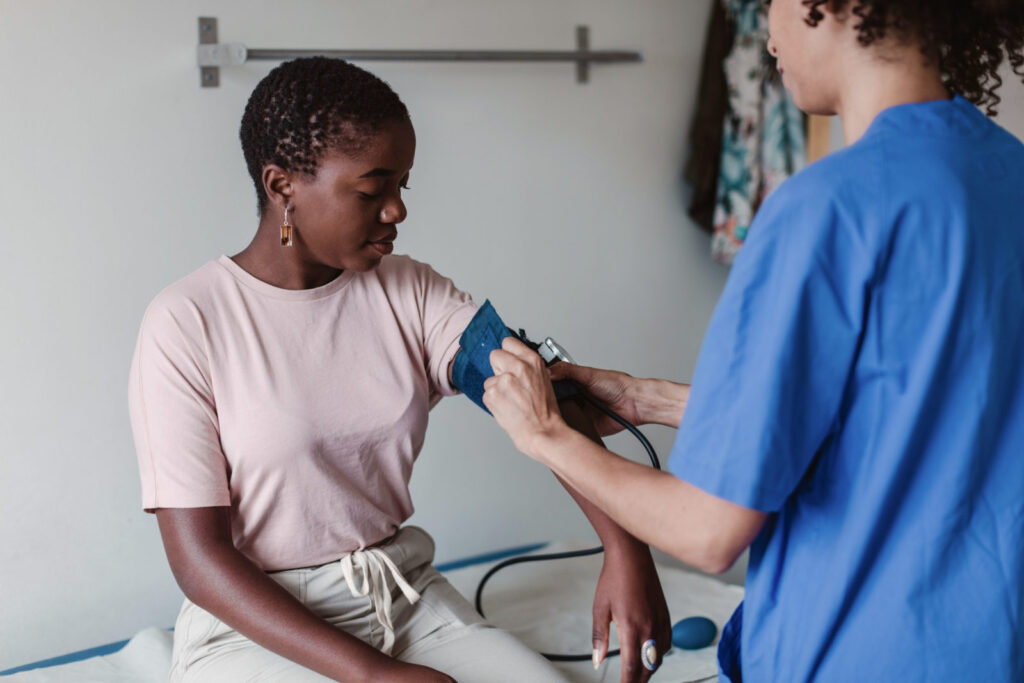
These four states are taking a boots-on-the-ground approach to addressing social determinants of health.
By Medecision
It is hard to be healthy if you don’t have access to nutritious food, clean air and water, a safe place to live, or reliable transportation. Social determinants of health—the conditions in the environments where people are born, live, work, play, worship and age—can influence as much as 60% of health outcomes. These are often things that individuals don’t have direct control over, like racism, the safety of your neighborhood, and air and water pollution.
Policymakers and activists recognize these as barriers to improving health among low-income people who are most vulnerable. As a result, some of them have prioritized addressing SDOH to help improve the overall health of the American population, particularly among those who qualify for Medicaid coverage. The Social Security Act has a provision called Section 1115 that allows the secretary of the Department of Health and Human Services to approve experimental programs that advance the priorities of the Medicaid program in individual states.
Many states use Medicaid 1115 demonstration waivers to support housing, substance use and other programs to improve SDOH among who are most vulnerable. Check out how these four states use their Medicaid 1115 demonstration waivers to improve health outcomes for Medicaid beneficiaries.
North Carolina: Connecting People With Needed Resources
In many states, managed-care organizations (MCOs) are responsible for administration of the Medicaid program. Nearly half of the states now require MCOs to screen Medicaid patients for SDOH to determine if they have unmet social needs.
Through a Medicaid 1115 demonstration waiver, North Carolina takes things a step further. After screening people for social determinants of health, MCOs are also required to refer them to programs that address housing, food, transportation and domestic violence resources if needed. They are also obligated to keep track of the referrals to determine individual outcomes.
These interventions aren’t limited to obvious social supports like providing shelter to homeless people. Individuals may also get home repairs and improvements or access to medically necessary food resources that can improve health outcomes. For example, the Kaiser Family Foundation suggests food deliveries that are suitable for diabetes patients and home improvements to improve air quality in order to help manage asthma symptoms.
MCOs in North Carolina must also provide live, in-person support for individuals who have the highest needs. Through this hands-on approach, these beneficiaries get help filling out paperwork for various social service programs.
California: Targeting Populations With Whole Person Care
Other states are targeting specific communities with their Medicaid 1115 demonstration waivers. In 2016, California launched its Whole Person Care (WPC) program using a waiver. It resulted in 25 concurrent programs across 26 counties, each of which has the power to choose its own target populations and program offerings that comply with state requirements.
Target populations include people without stable living arrangements, people who frequently utilize emergency healthcare services, people with substance use or other mental health concerns, and more. WPC participants benefited from services that California’s Medicaid program wouldn’t otherwise cover, including housing and employment services, medical respite care for homeless individuals, and assistance for people with substance use disorders. As a result, program beneficiaries’ use of emergency health services plummeted 19%.
The WPC program pilot ended in December 2021, but, because of the improved health outcomes that beneficiaries experienced, many of its benefits are slated to continue through a pending 1115 waiver.
Alaska: Zeroing in on Substance Use, Mental Health Issues
Overarching programs that address all SDOH aren’t the only option. Medicaid 1115 demonstration waivers are also useful for more targeted approaches. In Alaska, the Department of Health and Social Services’ Division of Behavioral Health submitted applications for two targeted programs: one specifically for substance use disorders and another for mental health services. Separating these programs facilitated a quicker approval so they could address the opioid epidemic in their community sooner.
Through its behavioral health Medicaid waiver program, the Division of Behavioral Health provides early intervention and engagement, outpatient, acute intervention, and residential and inpatient services to people who are at risk for mental health concerns. Substance use interventions, available for anyone age 13 and older using the same model of care, emphasize community-based care solutions, including home-based treatment services for families.
Illinois: Extending Postpartum Coverage for Eligible Women
While many of the 1115 demonstration waivers target people who are homeless or struggle with substance use, Illinois took a different approach. Its program addresses the needs of postpartum women who benefit from Medicaid and the Children’s Health Insurance Program (CHIP).
The federal government requires states to provide eligible women with Medicaid coverage until they are 60 days postpartum. Some states extend postpartum Medicaid coverage using 1115 Medicaid demonstration waivers. Women in Illinois have coverage under their waiver until they are one year postpartum. Since minority women are more likely to qualify for Medicaid coverage, hopes are that this could help improve maternal health outcomes among Black women, who have higher maternal mortality rates than white women.
Learn more
There are 62 approved Medicaid 1115 demonstration waivers in 46 different states, and an additional 35 waivers pending approval in 28 states. Each of these waivers has a unique approach to bridging the gap in healthcare services for people who receive Medicaid services. These programs use the SDOH to improve health outcomes for those who are most vulnerable.
To learn more about SDOH and Medicaid 1115 demonstration waivers, check out our infographic.



About The Author: Medecision
Fully delivering on the promise of data — and making the business of healthcare simpler and more successful — Medecision offers a whole new world of possibilities. The company's flagship offering, Aerial™, stands as the market's most extensible clinical data platform. It offers complete contextual awareness of members and automates next best actions — simple campaigns, complex care management, utilization approvals, and more — for optimal health outcomes.
Aerial is not only quick to deploy, it is easy to manage. The platform's effectiveness in reducing both medical and administrative costs, coupled with its role in improving the member and patient experience, has made it the preferred choice for health plans and care delivery organizations. Presently, Aerial is instrumental in catering to over 10% of the U.S. population, marking a significant milestone in advancing healthcare efficiency and effectiveness.
More posts by Medecision